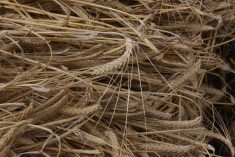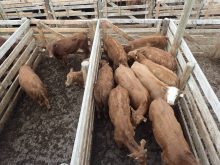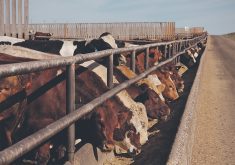Fed prices steady
In spite of seasonal pressure, the western Canadian fed market traded steady during the week ending July 4. Prices were $4 per hundredweight lower than the record-high prices set a month ago.
Alberta fed steers eased $0.85 per cwt. lower to close the week at $298.03 per cwt. Likewise, fed heifers finished the week at $295.47 per cwt., softening by $0.73 per cwt. from the pervious week.
Fed prices averaged $299.44 per cwt. in June, up by $1.78 per cwt. from May’s average.
For the first half of 2025, prices have rallied $32.09 per cwt. This is the third-largest rally for the same period in the last decade, falling behind 2023 and 2024.
Dressed sales were in the range of $496-$500 per cwt. delivered, easing $2 per cwt. from the previous week. Cattle that traded were scheduled for delivery from late July to mid-August.
All western Canadian packers showed buying interest, but interest from U.S. packers continues to be minimal.
With the move to the August contract, the Alberta cash-to-futures basis adjusted abruptly to +$10.24 per cwt. This is $7.12 per cwt. stronger than the five-year average, as well as the strongest basis for the same week since 2018.
Western Canadian fed slaughter for the week ending June 28 was 41,813 head. This is only the third instance so far this year that slaughter volumes have exceeded 40,000 head.
Year-to-date slaughter is nine per cent below 2024 volumes. Slaughter volumes for Western Canada have run lower than last year’s volumes every month this year, with the exception of April.
Canadian fed cattle and cow exports to the United States for the week ending June 21 was 9,383 head, four per cent above the volume for this time last year. Year-to-date exports are one per cent below last year.
Dressed sales in Ontario were fully steady with the previous week at $520 per cwt. delivered. Cattle that traded were scheduled for delivery during the week of July 14.
The Ontario cash-to-futures basis strengthened to +$23.38 per cwt., $14.36 per cwt. above than the five-year average.
Limited non-fed numbers
Non-fed numbers were limited during the week ending July 4 because many commercial auction facilities closed for Canada Day.
Of those that did trade, butcher cow prices were $1-4 per cwt. higher than the previous week. Negotiated rail prices were steady. Alberta D2 cows brought just $4 per cwt. shy of the highs set in early June.
Canfax analysts noted that based on seasonal trends, cow prices may trend sideways over the next month before a small price rally in early August. However, the possibility of an early August rally will depend on whether moisture conditions improve because more cows will likely be brought to town if things don’t get better.
Feeder volumes light
An average feeder price couldn’t be established for the week ending July 4 because auction volumes across Western Canada were too light.
Based on auction and electronic sales after Canada Day, though, the cash market tone appeared steady and forward delivery calf prices appeared steady to a bit stronger.
There was a good offering in the electronic sales of heavier-weight feeder steers coming out of background lots. Alberta and Saskatchewan steers weighing 975-1,075 pounds traded in the range of $381-392 per cwt.
Premiums were paid for grass cattle, with 1,000-lb. steers bringing around $400 per cwt.
A few feeder cattle were sold in June for 2026 delivery. Alberta steers weighing 750 lb. for delivery in February 2026 averaged about $470 per cwt. The forward delivery calf market is being supported by strong forward delivery prices into spring 2026.
Cutouts likely peaking
U.S. cut-out prices showed indications of peaking during the week ending July 4.
Choice closed the week about $5 per cwt. lower than the previous week, while Select prices were down by just more than $1 per cwt.
The Choice-to-Select spread was $14.50 per cwt. This is significantly narrower than the $24 per cwt. spread this time last year and the five-year average of $22 per cwt.

















